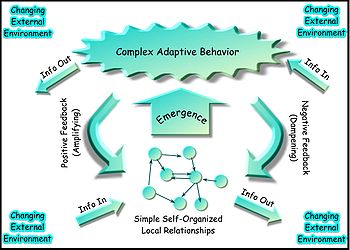This is my response to Can Learning Networks (partly) replace the teacher? as posted in the Hot seat of Networked Learning Conference 2010. I wasn’t able to participate in the conversation.
Here is my last year’s post (CCK08) in response to George’s question.
I suppose that’s what George and Stephen would like to see… we are actively building up the connections through forums, blogs, wikis and other various tools, which is all part of the learning process. And we are proactive in peer teaching as practising “teachers”: to explore what is distributed in the web and networks and people, to be inquisitive, to challenge each others’ perspectives by postings and responses based on reasons (not just passions – with emotional control) in a network. Some of us have used our own writings, postings, others have used podcasts, videos on Youtubes, pictures, powerpoints, and mind maps etc. to share the knowledge and learning. In other words, modelling and demonstration as a teacher and connecting and practice as a learner (as cited from Stephen in various forum discussion).
When such connections and exchange of perspectives are coupled with personal reflections, I think it could generate powerful learning amongst the individuals – with valuable emergent knowledge shared and developed. For me, it has already changed the way I learn.
In the forum I often like to learn the views of the participants, mainly because here you are: George, Stephen, Jon, Frances, Bob, Lisa, Old Socs and others… the lively ones whose quotes and perspectives are more relevant and important than those quoted in “theories” in OUR discussion. Your views are based on years of experience and knowledge, and are equally valuable when compared to those findings coming from applied research done by great educators, researchers and professors.
In this connection, I think the exploitation of ICT in the mining of distributed network knowledge and network sharing and discussion could often outperform that of an individual “teacher” or “professor”, as the process could more readily crystallise the essence of connected knowledge, which is emergent.
Such deep learning is often more valuable to the participants because the emergent knowledge is a result of “co-construction” by its network individuals. The diversity, autonomy, interactivity and openness, in a connective knowledge network is both encouraged and forged under such learning ecology (adapted from Stephen).
So in this network, is everyone a leader and instructor in learning? If you want to enlighten and share the learning, what are you going to do about it? Lead from the front? Keep each other excited! Stay current with knowledge upfront! Is it what most professors are doing? Isn’t it in line with the principle of life long learning? Is that the spirit of emergent leadership – exploiting the learning via technology and network (artefacts and people) ? Sorry too many questions already. Your turn…
It seems a similar learning pattern has emerged in CCK09, though there are significant differences in terms of forum participation. There were some CCK08 participants joining back in CCK09, and I noted a few have acted in the role of “helpers” or “mentors” to each other rather than “teachers” in the blogs, twitters, forum, Ning and various other media.
Can I come to the same conclusion as that in CCK08? I think I still need more time to observe and reflect….
If I were to answer the question in general, then my response would be: it depends on the situations. Under certain circumstances, learning networks could replace the teacher partly for some learners, but not all.
I think it depends on (a) the learning context (formal, informal or non-formal learning, or a hybrid/blended learning or institutional learning, (b) the curriculum or learning outcomes required, (c) the roles of the “teacher”, (d) the expectation of learners, (e) the skills, expertise, experience, and learning styles of the learners, (f) the tools and technologies and connections that are available to the learners to support the learning, and (g) the time factor.
Though the learning network may be able to provide guidance, facilitation, mentoring and even expert advice on ICT tools and techniques for the learners, it is important to realise that we have made huge assumptions here.
What sort of learning network is the learner engaged in? Are the networkers coming from a diverse field of interests or expertise? How about the learning readiness of the learners? Are the network members ready to support each others? Have the learners mastered certain metacognitive skills (including technology literacy, critical thinking and communication skills)? Would the network be able to provide the emotional support that some learners need on a confidence and trustful basis? Does the learning network fit into the learners’ needs?
Due to the complexity, changing and emergent nature of learning in networks, there are difficulties in guaranteeing the results of learning.
Can a network of individuals replace a teacher or professor? Your conclusions…..
